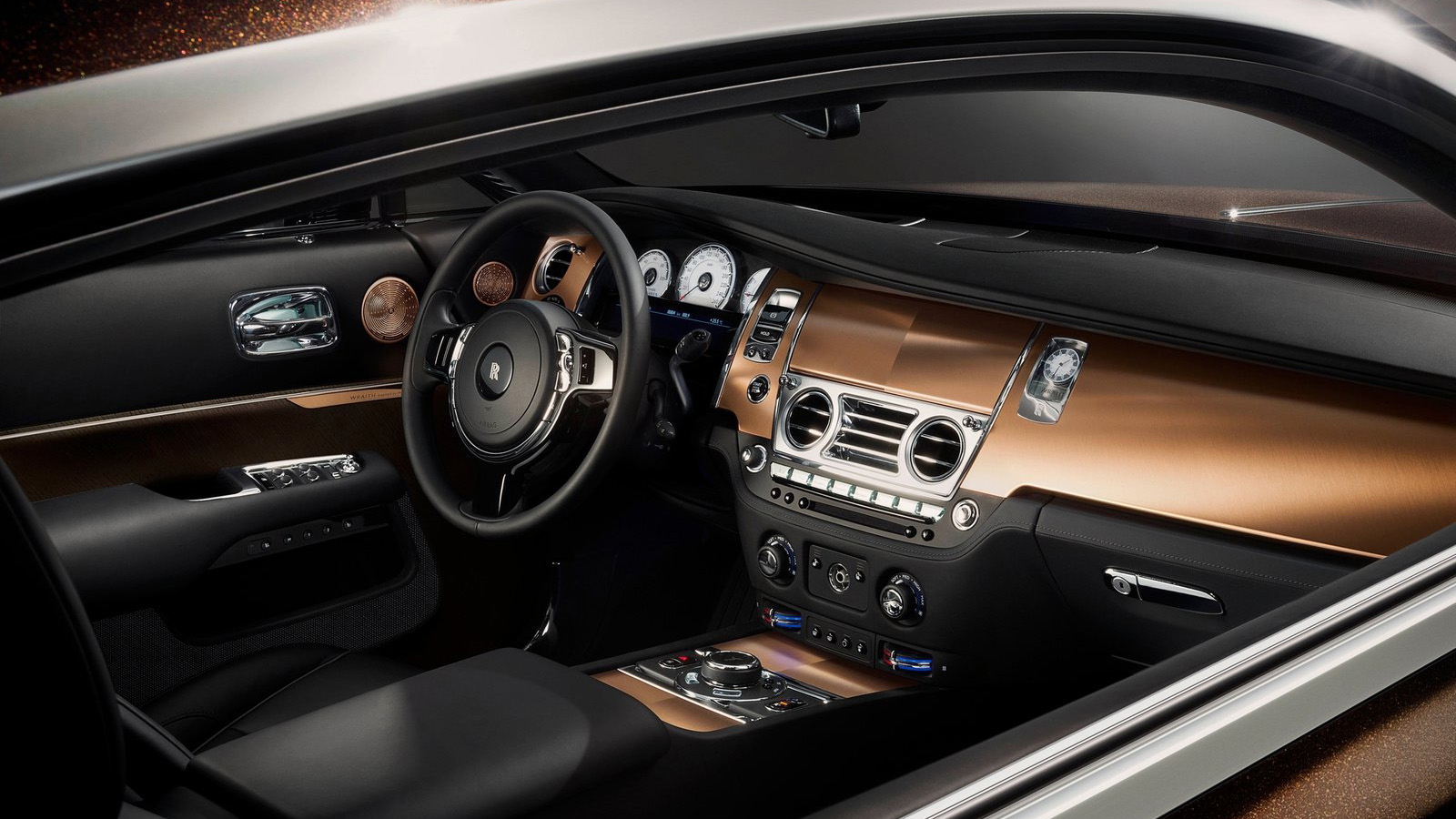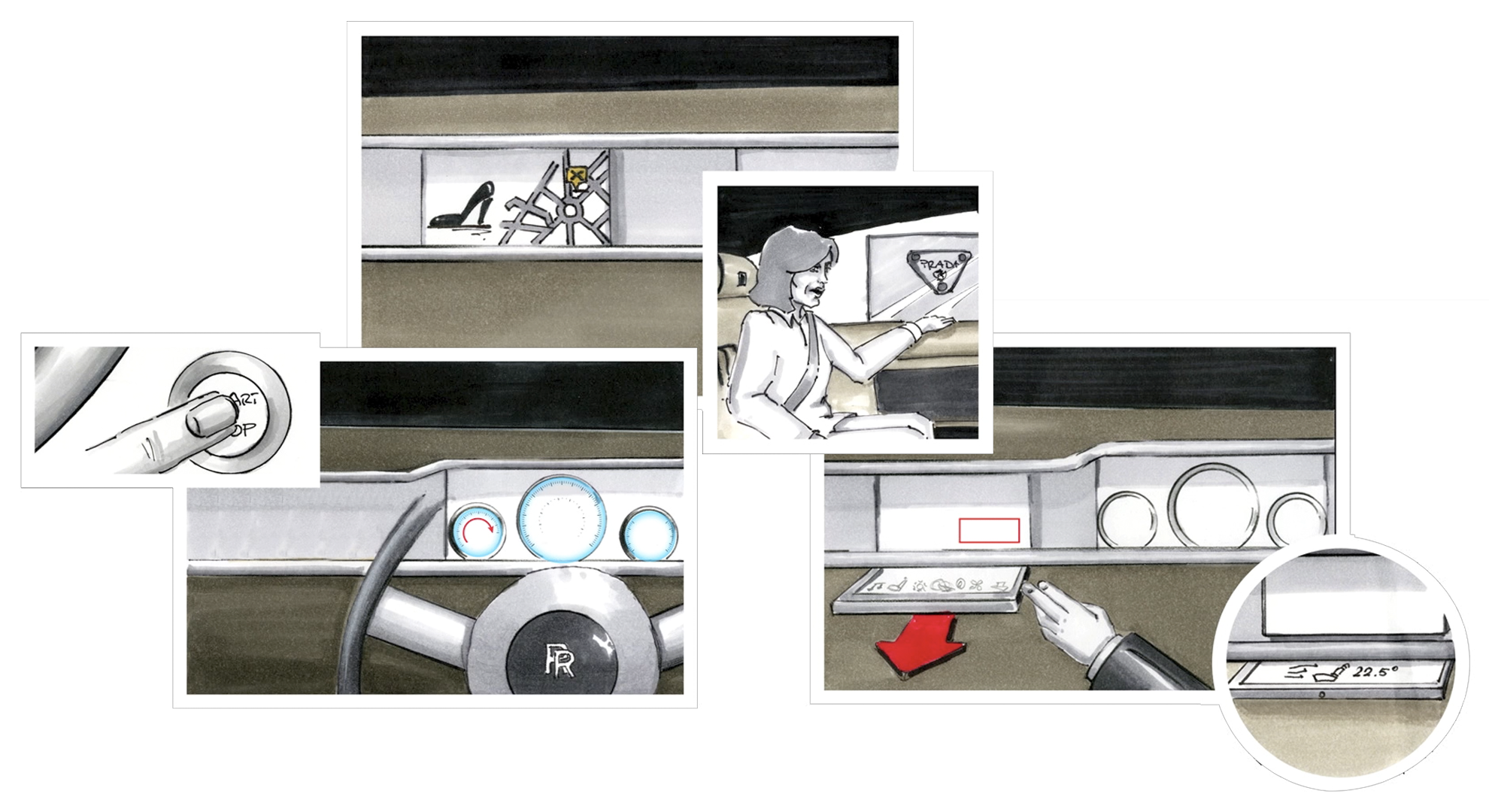Project Overview
In 2015, Rolls-Royce launched the 8th generation Phantom, followed by the Cullinan SUV. It was the first Rolls Royce to have a fully digital HMI, consisting of a digital instrument cluster, a center display screen, rear passenger screens and a heads-up display. In the past, all Rolls-Royce cars had analog instruments and were slow to adopt connected vehicle services with modern displays.
GOALS
To help Rolls-Royce enter the era of a fully connected, digital HMI by creating a user experience and infotainment user interface that fulfills their values of delivering excellence, timelessness and inspiring greatness.
MY CONTRIBUTIONS
I was part of the creative team on the Rolls Royce NM (Next Model) concept team and the creative director for the series production of the Phantom and Cullinan program at BMW Group Designworks.
Background
The interior design of a Rolls-Royce vehicle epitomizes luxury, elegance, and craftsmanship, offering an unparalleled experience in automotive interiors.
The cabin design favors a traditional layout with an emphasis on tactile materials and car controls are intuitive, simple controls found in typical analog executions.

Innovation
We began by creating a small narrative piece to pitch how connected services could be tailored for the Rolls Royce connector. Aside from the obvious use of a digital instrument cluster, we proposed other screens tailored for the front passenger and rear seat passengers. We developed three user personas specfic to Rolls-Royce: The driver (owner / cheuffer), the co-driver (front passenger), and the rear-seat passenger who is typically driven by a chaueffer on occassion.

THE DRIVER
We proposed a digital instrument cluster with an integrated map display and turn by turn directions reducing distractions while driving.
A retractable center display with a separate climate control touch display enables contemporary streamlined cabin appearance.
CO-DRIVER
Additional screen in front of the passenger enabled us to offer more connected services, a web browser and retail shopping experiences . With linked displays, the passenger had the ability to add waypoints to their current journey,
REAR OCCUPANTS
In typical vehicles, the rear seat entertainment is just a mirror of the main system. The rear occupant in a Rolls-Royce are very important so we propose exclusive features. Examples include office and connected service features and special functionality such as external camera views.
THE DRIVER
We proposed a digital instrument cluster with an integrated map display and turn by turn directions reducing distractions while driving.
A retractable center display with a separate climate control touch display enables contemporary streamlined cabin appearance.
THE CO-DRIVER
Additional screen in front of the passenger enabled us to offer more connected services, a web browser and retail shopping experiences . With linked displays, the passenger had the ability to add waypoints to their current journey,
THE REAR OCCUPANT
In typical vehicles, the rear seat entertainment is just a mirror of the main system. The rear occupant in a Rolls-Royce are very important so we propose exclusive features. Examples include office and connected service features and special functionality such as external camera views.
Process
Our design process, from research through execution presented unique challenges. The design team was divided into two groups.
The most efficient way to get the best results possible was to have one group in Munich for shepharding design intent with the engineering teams and to gather testing and feedback results, with another design team in Los Angeles yielding rapid iteration cycles.

© 2024 jyoteen + respective holders
Email: jyoteen@gmail.com
Connect with me on these other services: